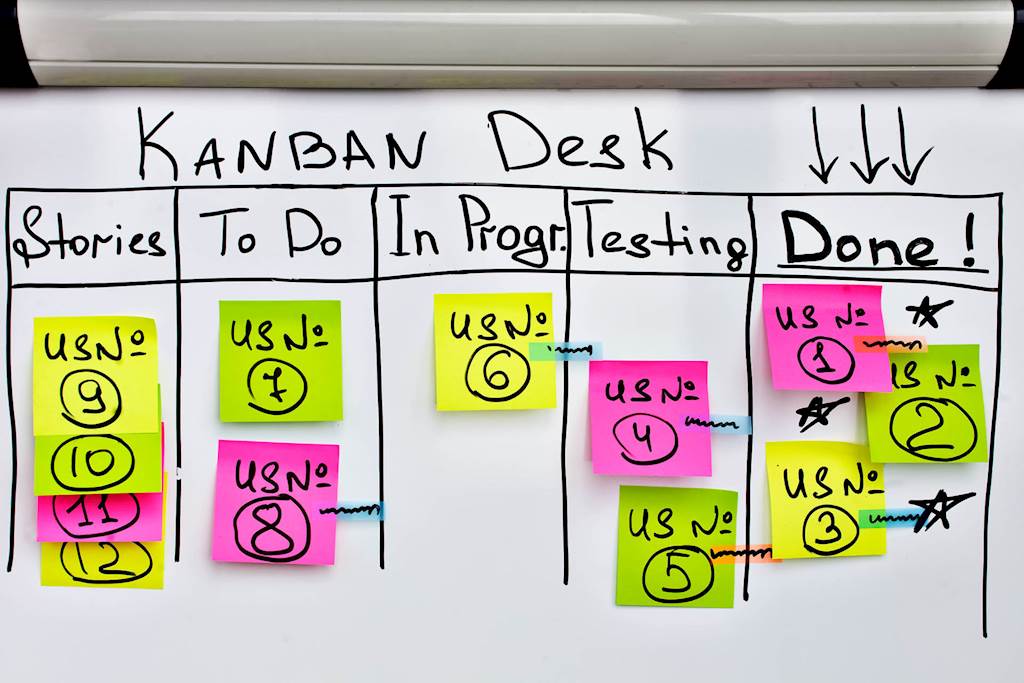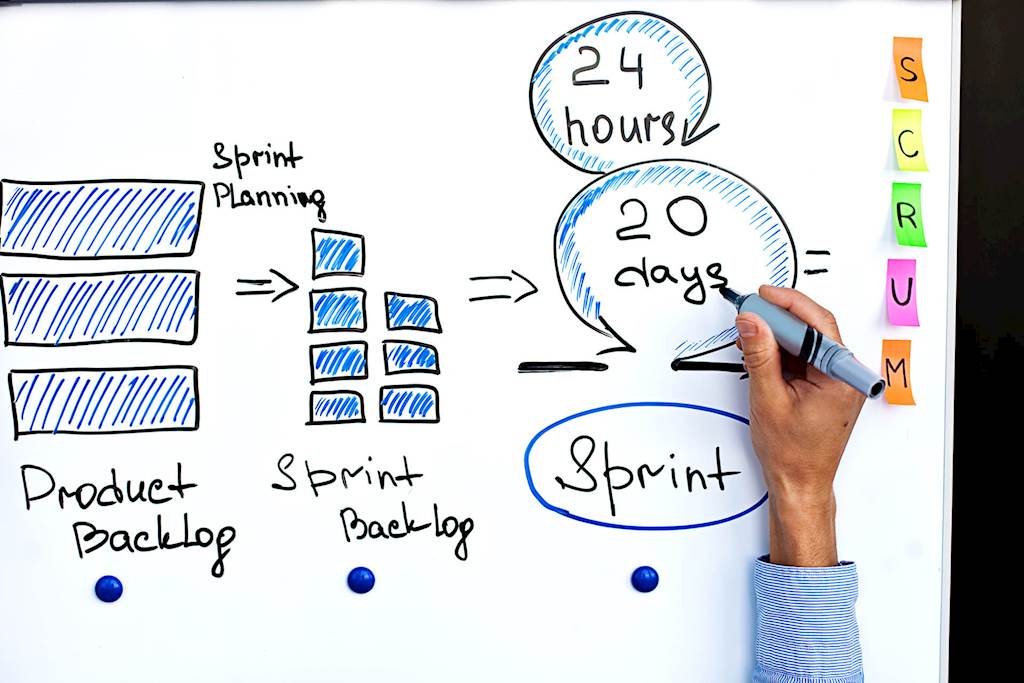Organizational agility refers to a firm’s capacity to continue to adapt without needing to change.
The focus falls on adaptability, engendered by the organization’s purposeful shift and adjustment to changing environments, both as an independent body and with partner alliance.
Agility strives for long-term growth in a way that rolls with the daily landscape and the challenges it throws up. Studies show that CEOs who embrace this working philosophy can expect increased growth, profit and better productivity.
Read on for more information about:
- The importance of Agile frameworks
- The development of Agile
- Four Agile frameworks: Lean, Kanban, Kaizen and Scrum
The importance of agile frameworks
Project Management Institute research finds that in 2015, three quarters of highly agile organizations hit their targets; 65 per cent were completed to deadlines and 67 per cent were completed on budget. These figures show marked improvements on what firms with low agility managed.
Furthermore, agile organizations increased their revenue 37 per cent faster to achieve higher profit compared to margins of 30 per cent in companies that are not agile.
Lean methods show equally compelling results, and are the reason for the acceleration in Dropbox registered users from 100,000 to over 4m in just over a year. Another beneficiary of the methodology is IMVU which has hit 50m registered users and an annualized revenue run rate of over $40m.
If employees are not in sync regarding corporate philosophy or cannot distinguish between Agile and Lean, Scrum and Kanban, the firm will not notice any developments in productivity. This lack of knowledge may provoke a fall in motivation, ultimately impacting productivity, for which reason basic methodology must be shared and learned by all employees.
The development of Agile
Based on the 12 Agile Principles, organizations can benefit from shorter time scales and adaptive iterations that create incremental deliveries. A core strength is adaptability and versatility which run in tune with market conditions, feedback and internal obstacles to launch bespoke products into target markets with greater speed.
As such, an agile company implements quicker and can grasp opportunities as and when they appear. Rapid decision-making is enabled by the organization’s flexibility and simple communication methods.
Studies carried out in 2015 found that Agile is the main approach to management for 601 development and IT professionals, who rely on it mostly to catalyze collaboration and push up software quality.
Lean
Lean’s genesis came about in the automotive industry of 1950s Japan, arising from the necessity of reducing loss and enabling sustainable production.
At the turn of the millennium, it became adapted for software development and related to 7 initial Lean principles. This allowed Lean frameworks to be assimilated by other industries. Today, Lean is helping managers in large companies to make better, faster business decisions.
Lean companies typically follow a 'learn-measure-build' cycle pattern, carrying out tests at frequent intervals and touching base regularly with customers. They recognize their value and concentrate on core processes to continually improve; a cycle that promotes sustainability, smart development and success.
The Lean philosophy helps ventures to launch products that are desired by the customer at a quicker rate and lower price than traditional means allowed, thus reducing risk.
Kanban
Formulated by David J Anderson, the Kanban method is a gradual, evolutionary process that initiates change for organizations while making sense of the chaos by which firms are so often swamped.
It champions flow, uncovering and process problems so they can be resolved at speed and result in quicker client delivery.
The flow of value is of prime importance, enabling businesses to operate at optimal levels. In this environment, finishing projects is of greater importance than starting many projects at once.
Kanban is not about assimilating a new setup, rather it concerns laying Kanban properties on an existing flow framework so that effective change can be introduced over a period of time. There’s no need to reach for wholescale changes, which makes it relatively simple to implement.
The cornerstone of Kanban is a pull system across the workflow or on specified areas. Limitations are put on ‘work in progress’ and new work is brought into the process when capacity permits within the local WIP limit.
These imposed parameters serve to highlight problem areas within the flow so that they can be identified and resolved.
Kanban enables positive change, but first you have to decide on what needs to be changed and this is achieved by studying how value flows through the system. Issues are analyzed and changes implemented on a cyclical journey that promotes continual development and progression.

Kaizen
Often heard alongside Kanban, Kaizen is generally understood to mean continuous improvement, and is a core strand of Kanban.
Kaizen is a long-term approach that makes incremental changes in processes to improve quality and efficiency, and is best-known for its role in Lean manufacturing and programming. In the working environment, Kaizen is a universally embraced practice, and transformation is upheld by all employees.
Kaizen can be broken down into the steps: asses, plan, implement and evaluate. It is associated with a drive for improvement, to stay competitive and to provide jobs, as an effort is made to trigger quick changes to reach short-term goals.
Scrum
Scrum is an infrastructure that enables team members to find solutions to complicated adaptive problems while delivering products of the highest value in a productive and creative way.
The approach divides time, product and organization to guarantee results through an optimized process. Companies aiming to embrace Scrum should focus on putting together small teams to which are given smaller tasks to be completed over short time periods, such as two weeks.
Progress is then tracked on Scrum boards comprising the following categories: ‘Backlog’, ‘To-do’, ‘In progress’ and ‘Done’.

Conclusion
Agile frameworks have withstood early criticism and are now the norm rather than the exception, as major corporations increasingly embrace them, even those within controlled industries.
While its manifesto emphasized software development, the concept has become an empowering philosophy that enables people to drive value into an enterprise in a way that ensures the approach permeates organizations. When customers are brought into the disciplined equation, quality product delivery is almost guaranteed.
Access the latest business knowledge in IT
Get Access






Comments
Join the conversation...